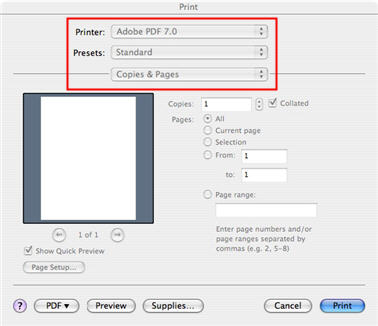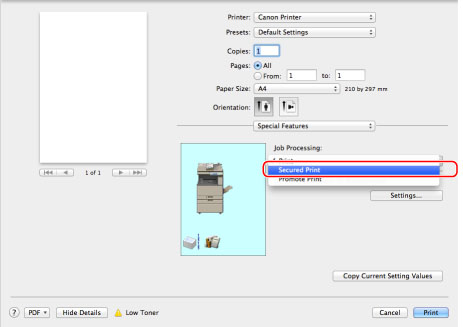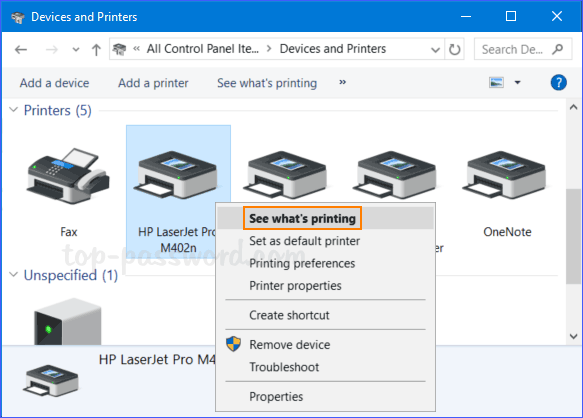

- #MAC OS LIST PRINT JOBS VIA COMMAND LINE FOR MAC OS#
- #MAC OS LIST PRINT JOBS VIA COMMAND LINE MAC OS X#
- #MAC OS LIST PRINT JOBS VIA COMMAND LINE SOFTWARE#
Traces of the NeXT software heritage can still be seen in macOS.
#MAC OS LIST PRINT JOBS VIA COMMAND LINE FOR MAC OS#
On February 4, 1997, Apple Computer acquired NeXT for $427 million, and used OPENSTEP as the basis for Mac OS X, as it was called at the time. Some of these efforts, such as Taligent, did not fully come to fruition others, like Java, gained widespread adoption. However, by this point, a number of other companies - notably Apple, IBM, Microsoft, and even Sun itself - were claiming they would soon be releasing similar object-oriented operating systems and development tools of their own. OPENSTEP was, for a short time, adopted by Sun and HP. NeXTSTEP underwent an evolution into OPENSTEP which separated the object layers from the operating system below, allowing it to run with less modification on other platforms. Īll but abandoning the idea of an operating system, NeXT managed to maintain a business selling WebObjects and consulting services, only ever making modest profits in its last few quarters as an independent company.

It also supported the innovative Enterprise Objects Framework database access layer and WebObjects application server development environment, among other notable features. This environment is known today in the Mac world as Cocoa. It featured an object-oriented programming framework based on the Objective-C language. NeXTSTEP was based on the Mach kernel developed at CMU (Carnegie Mellon University) and BSD, an implementation of Unix dating back to the 1970s. The hardware was phased out in 1993 however, the company's object-oriented operating system NeXTSTEP had a more lasting legacy.

As the first workstation to include a digital signal processor (DSP) and a high-capacity optical disc drive, NeXT hardware was advanced for its time, but was expensive relative to the rapidly commoditizing workstation market and marred by design problems. MacOS retained the major version number 10 throughout its development history until the release of macOS 11 Big Sur in 2020 releases of macOS have also been named after big cats (versions 10.0–10.8) or locations in California (10.9–present).Ī new macOS, Monterey, was announced during WWDC on June 7, 2021.Ī diagram of the relationships between Unix systems including the ancestors of macOSĪfter Apple removed Steve Jobs from management in 1985, he left the company and attempted to create the "next big thing", with funding from Ross Perot and himself. The operating system was further renamed to "macOS" starting with macOS Sierra. Lion was sometimes referred to by Apple as "Mac OS X Lion" and sometimes referred to as "OS X Lion", without the "Mac" Mountain Lion was consistently referred to as just "OS X Mountain Lion", with the "Mac" being completely dropped.
#MAC OS LIST PRINT JOBS VIA COMMAND LINE MAC OS X#
Starting with the Intel build of Mac OS X 10.5 Leopard, most releases have been certified as Unix systems conforming to the Single Unix Specification. Starting with Mac OS X 10.7 Lion, macOS Server is no longer offered as a separate operating system instead, server management tools are available for purchase as an add-on. Since then, several more distinct desktop and server editions of macOS have been released. MacOS was first released in 1999 as Mac OS X Server 1.0, with a widely released desktop version- Mac OS X 10.0-following in March 2001. To ease the transition, versions through 10.4 were able to run Mac OS 9 and its applications in a compatibility layer. The transition was a technologically and strategically significant one. However, the current macOS is a Unix operating system built on technology that had been developed at NeXT from the 1980s until Apple purchased the company in early 1997.Īlthough it was originally marketed as simply "version 10" of the Mac OS (indicated by the Roman numeral "X"), it has a completely different codebase from Mac OS 9, as well as substantial changes to its user interface. That system, up to and including its final release Mac OS 9, was a direct descendant of the operating system Apple had used in its Macintosh computers since their introduction in 1984.

Rwhich is my own recursive implementation of which that prints all of the intermediate cascading symlinks (to stderr) down to the final target (to stdout).The history of macOS, Apple's current Mac operating system formerly named Mac OS X until 2012 and then OS X until 2016, began with the company's project to replace its "classic" Mac OS. Look at the following on my system: $ rwhich emacs Will indeed dereference every symlink involved in the path construct to the final target behind some_path.īut one level of cascading symlinks is just a particular case among others in a system, the general case being N levels of cascading symlinks. The question is not accurate enough to give a simple answer as the one of brian-brazil: readlink -f some_path


 0 kommentar(er)
0 kommentar(er)
